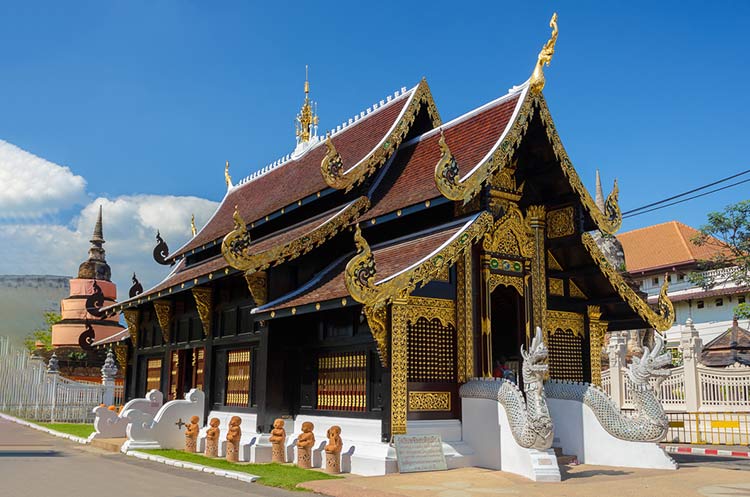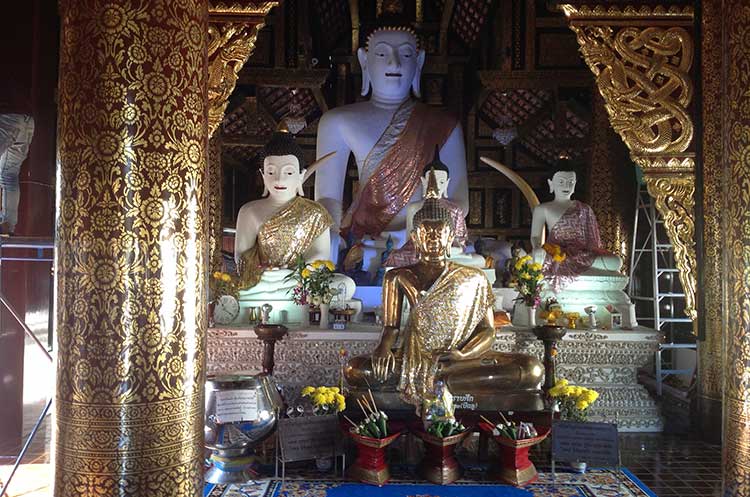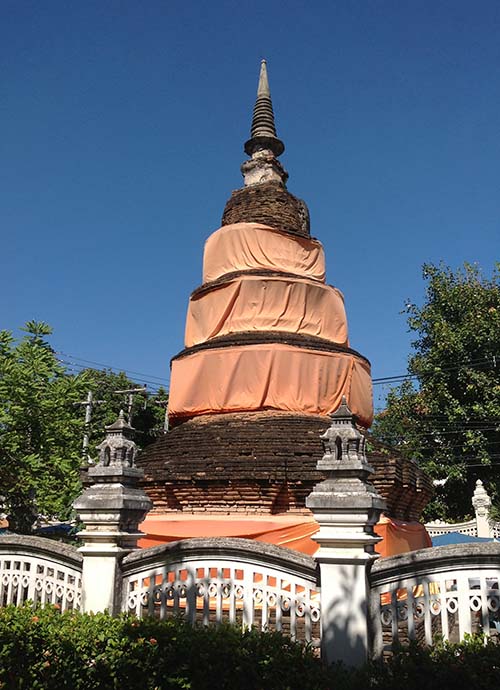
Wat Inthakin
Temple where the city pillar was placed in 1296
Chiang Mai
The Wat Inthakin is a little visited temple in the heart of the old walled town of Chiang Mai. The small, active temple comprises of a very ornate viharn, two chedis and the monks living quarters.
The temple is also known as the Wat Sadue Muang, which translates to “temple of the city navel”, a reference to the spot in the center of town where the temple was built over 700 years ago.
Sao Inthakin, the city pillar
The temple is named after the Pali name for the Chiang Mai city pillar, the Sao Inthakin, which literally translates to “pillar of Indra”. According to local legend Indra, the Lord of Heaven in Hindu belief gave the pillar to the people who inhabited the area to protect them against evil.
The temple’s founding date is not known with certainty. King Mengrai of the Lanna Kingdom placed the pillar on the temple grounds at the center of his newly established city Chiang Mai in 1296. Because of the presence of the city pillar, the Wat Inthakin was a temple of great spiritual significance.
In 1800 Lanna King Chao Kawila moved the pillar to the nearby Wat Chedi Luang, where to this day the annual Inthakin festival is held. During the Burmese occupation which ended in 1774 the temple was abandoned.

Viharn
The Wat Inthakin’s viharn or assembly hall was recently built to enshrine the temple’s Buddha images. Before the construction of the viharn, the images were housed in a simple shed.
The viharn is a very ornate dark wooden building on a stone base. The Lanna style structure has a multi tiered roof, the ends of the carved barge boards are adorned with stylized finials shaped as a Naga serpent, while golden chofah adorn the ends of the roof top. Its front gable is intricately decorated in gold colors.
Naga stairways lead to the viharn’s entrance. Inside, large ornately decorated pillars support the wooden roof. The viharn enshrines the principal Buddha image named Luang Pho Khao. The image was made in 1794 by order of Kawila, before he became King of Lanna.
Chedis
The oldest structures of the Wat Inthakin are two brick chedis, one on either side of the road. The 15th century circular chedi was built over an older existing one, while the 14th century chedi is octagonal in shape. Also on the grounds are the kuti, the monks living quarters.
Museum of Wat Inthakin Sadue Muang
Next to the temple is the Inthakin Museum which gives an impression of life in the days of the Lanna Kingdom. On display are among others paintings of historic events, displays of people wearing 13th century clothing, a scale model of the Wat Jed Yod temple in Chiang Mai and a model of an elephant with a shrine housing a Buddha image on its back, the way images were transported in those days. Among the items exhibited are old musical instruments, various ancient weapons, utensils, pottery and Buddha images.

How to get to the Wat Inthakin
The temple is located on Soi Inthakin, off Intrawarorot road in the center of the old walled town of Chiang Mai, across the street from the Three Kings monument.
The temple is within walking distance of the Wat Chedi Luang and the Wat Phra Singh. Alternatively, rent a bicycle or charter a tuk tuk.
Opening hours
The Wat Inthakin opens daily during daylight hours.
Entrance fee
Admission is free.